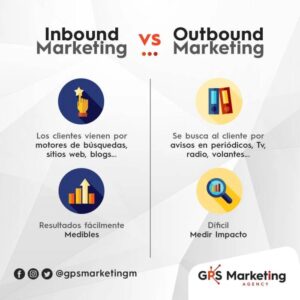Thought leadership positioning is not just a buzzword; it’s a critical framework through which businesses can establish authority and trust within their industries. It empowers companies to present innovative ideas and insights, thus influencing their audience and driving engagement.
By understanding the nuances of effective thought leadership, organizations can not only differentiate themselves but also create meaningful connections with their target market. Through strategies such as market research, leveraging technology, and utilizing public relations, businesses can elevate their presence and resonate with those they aim to influence.
Understanding Thought Leadership Positioning
Thought leadership positioning refers to the strategic process of establishing an individual or organization as an authority within a specific industry or field. This concept is pivotal in the business landscape, as it not only enhances credibility but also fosters trust with potential clients and stakeholders. By positioning oneself as a thought leader, businesses can influence industry direction, gain competitive advantage, and ultimately drive growth.
Effective thought leadership is characterized by several key attributes that distinguish successful leaders in various industries. These individuals demonstrate deep expertise, a strong vision, and the ability to communicate complex ideas clearly and persuasively. They are often proactive in sharing insights and perspectives through various channels, from articles and blogs to speaking engagements and social media.
Characteristics of Effective Thought Leaders
A strong thought leader possesses a unique blend of qualities that contribute to their influence. Below are key characteristics that define effective thought leaders:
- Expertise: They have extensive knowledge and experience in their field, often supported by formal education and practical application.
- Innovative Thinking: Effective thought leaders challenge conventional norms and introduce new ideas or perspectives that stimulate discussion and interest.
- Strong Communication Skills: They are adept at articulating complex concepts in a manner that is accessible and engaging to their audience.
- Authority and Credibility: Consistently producing well-researched content and sharing insights helps establish their reputation as an authority.
- Community Engagement: They actively participate in discussions, both online and offline, fostering relationships and building a network within their industry.
Successful examples of thought leadership positioning can be observed in various notable companies. For instance, IBM has effectively established itself as a thought leader in technology and innovation through its research publications, insightful blogs, and participation in industry conferences. Similarly, companies like HubSpot have positioned themselves as leaders in inbound marketing by producing a wealth of educational content, including eBooks, webinars, and seminars, which not only showcase their expertise but also provide value to their audience.
Another prominent example is Tesla, whose CEO, Elon Musk, is recognized for his visionary leadership in electric vehicles and renewable energy. Musk’s ability to communicate and promote innovative ideas has significantly influenced both public perception and industry standards.
“Thought leadership is not about being a guru; it’s about being a contributor to the conversation, providing insight and inspiring change.”
These examples illustrate how effective thought leadership positioning can transform a company’s brand and enhance its market presence by demonstrating authority and fostering trust in a competitive environment.
Integrating Market Research into Thought Leadership
In the realm of thought leadership, integrating market research is essential to ensure that your insights resonate with your audience. By leveraging data-driven strategies, organizations can create content that not only informs but also engages their target market effectively. This integration paves the way for a more strategic approach to thought leadership that aligns with audience needs and market trends.
Conducting thorough market research is pivotal in shaping effective thought leadership strategies. Methods for gathering this information can vary, but they primarily revolve around qualitative and quantitative approaches that yield actionable insights. Leveraging surveys, focus groups, interviews, and competitor analysis can provide a well-rounded understanding of audience preferences and behaviors. Additionally, utilizing tools like Google Analytics and social media metrics helps in understanding audience engagement and content performance, which in turn informs the direction of thought leadership initiatives.
Analyzing Audience Needs through Market Research
Understanding and analyzing audience needs is crucial for tailoring thought leadership content. Effective market research involves various methodologies that can unearth valuable insights. Here are methods to consider:
- Surveys: Deploying online surveys allows for collecting direct feedback from your audience regarding their preferences and pain points. Surveys can be distributed via email, social media, or through your company’s website, enabling you to gather quantitative data efficiently.
- Focus Groups: Conducting focus group discussions provides qualitative insights into audience perceptions and motivations. This interactive method encourages participants to share their thoughts in a structured setting, revealing deeper emotional responses to specific topics.
- Social Listening: Monitoring social media conversations helps identify trending topics and audience sentiments. Tools like Hootsuite or Brandwatch can analyze conversations related to your industry, offering a wealth of insights into customer opinions and emerging trends.
- Competitor Analysis: Evaluating competitors’ content strategies and their audience engagement can highlight gaps in your own approach. This analysis helps in identifying what resonates with your target market and what doesn’t.
Organizing findings from market research is equally important for enhancing content creation. Insights should be systematically categorized into themes that align with strategic goals. Developing personas based on research findings can help envision audience segments more clearly. By mapping out these personas, you can tailor content that speaks directly to their interests and challenges. For instance, if your research reveals a segment of your audience values sustainability, creating thought leadership pieces that address environmentally-friendly practices can significantly increase engagement.
“Well-organized insights transform data into strategic content, making thought leadership not just informative, but impactful.”
Leveraging Marketing Software for Enhanced Positioning

In today’s fast-paced digital landscape, effective thought leadership positioning requires strategic use of marketing software. These tools not only streamline processes but also enhance the visibility and impact of thought leadership initiatives. By integrating advanced software solutions, organizations can optimize their outreach, engage their audience more effectively, and track the metrics that matter.The right marketing software can significantly bolster thought leadership efforts by offering insights into audience behavior, automating communication, and analyzing engagement metrics.
Leveraging these tools enables brands to cultivate authority in their industry while ensuring their messages resonate with the target audience.
Key Marketing Software Tools Supporting Thought Leadership Initiatives
A selection of marketing software tools plays a pivotal role in supporting thought leadership initiatives. These tools can help facilitate content creation, distribution, and engagement tracking. Here are some essential software tools worth considering:
- Content Management Systems (CMS): Platforms like WordPress and HubSpot allow for streamlined content creation and management, enabling organizations to publish high-quality thought leadership articles easily.
- Email Marketing Software: Tools such as Mailchimp and Constant Contact assist in crafting targeted email campaigns that share thought leadership content, helping to nurture relationships with subscribers.
- Social Media Management Tools: Platforms like Hootsuite and Buffer help schedule and manage social media posts, ensuring thought leadership messages reach the right audience at optimal times.
- Analytics Tools: Google Analytics and social media insights provide valuable data on audience engagement, allowing brands to refine their strategies based on performance metrics.
- Webinar and Virtual Event Software: Tools like Zoom and GoToWebinar facilitate online events that can position a brand as a thought leader in its industry.
Framework for Tracking Engagement Metrics
Establishing a robust framework for tracking engagement metrics is essential for assessing the effectiveness of thought leadership initiatives. This framework should encompass various dimensions of engagement, providing a holistic view of audience interaction. Here’s a structured approach to create that framework:
1. Define Key Performance Indicators (KPIs)
Identify specific metrics that will gauge the success of thought leadership efforts. Examples include website traffic, social media shares, and content downloads.
2. Implement Tracking Tools
Utilize analytics software to monitor the defined KPIs. Tagging URLs with UTM parameters can provide insight into where traffic is coming from and how users are engaging with content.
3. Regular Reporting
Create a schedule for reporting on these metrics, such as monthly or quarterly. This will help identify trends and adjust strategies accordingly.
4. Analyze and Iterate
Use the collected data to evaluate the effectiveness of different content types and distribution channels. Make data-driven adjustments to enhance engagement.
“Data is the new oil. It’s valuable, but if unrefined, it cannot really be used.” – Clive Humby
Automated Marketing Solutions in Amplifying Thought Leadership Messaging
Automated marketing solutions play a significant role in amplifying thought leadership messaging by allowing organizations to reach a larger audience efficiently. These solutions not only save time but also ensure consistent communication. Below are key aspects of how automation enhances thought leadership:
- Segmentation and Personalization: Automated solutions can segment audiences based on their interests and behaviors, tailoring messages to enhance relevance and engagement.
- Content Distribution: Automation enables timely and consistent distribution of thought leadership content across multiple channels, ensuring greater reach and engagement.
- Lead Nurturing: Automated workflows can facilitate lead nurturing by sending targeted content to prospects at various stages of the buyer’s journey, reinforcing the brand’s authority.
- Performance Tracking: Automating data collection allows for real-time tracking of engagement and conversion metrics, providing insights to refine strategies.
By investing in the right marketing software and establishing a structured framework for engagement tracking, organizations can effectively leverage these tools to solidify their thought leadership positioning in the market.
The Role of Public Relations in Positioning
Public relations (PR) plays a crucial role in amplifying thought leadership positioning by establishing credibility and visibility in the market. A well-executed PR strategy can enhance the perception of expertise, ensuring that insights and opinions resonate with the target audience. This synergy between thought leadership and public relations creates a platform for trust and influence, ultimately leading to stronger brand positioning.Strategically utilizing public relations can bolster thought leadership credibility by enhancing visibility across various channels and platforms.
PR tactics can be tailored to highlight significant achievements, expert opinions, and innovative ideas, which are essential for establishing authority in the industry. Organizations can leverage PR to create narratives that resonate with their audience, thus fostering connections and driving engagement.
Strategies for Utilizing Public Relations
Implementing effective PR strategies involves a series of actions that can significantly enhance thought leadership visibility. Here are key approaches to consider:
- Media Outreach: Actively engage with journalists and media outlets that cover your industry. Building relationships can lead to opportunities for interviews, articles, and features that emphasize your thought leadership.
- Storytelling: Craft compelling stories that connect your insights with real-world applications. Highlighting case studies or innovative solutions can attract media attention and share your expertise.
- Event Participation: Participate in industry conferences, webinars, and panel discussions. These platforms allow you to showcase your thought leadership and connect with key stakeholders in your field.
- Press Releases: Utilize press releases to announce key milestones, research findings, and achievements. Regularly sharing newsworthy content keeps your brand in the public eye and reinforces your position as an industry leader.
Best Practices for Crafting Press Releases
Press releases are powerful tools for communicating thought leadership achievements effectively. To maximize their impact, consider the following best practices:
- Clear Headline: Start with a concise and compelling headline that captures attention and clearly communicates the essence of the news.
- Engaging Lead Paragraph: Begin with a strong lead that summarizes the key points of the announcement and entices the reader to learn more.
- Incorporate Quotes: Include quotes from key stakeholders or industry experts to add authenticity and depth to the narrative.
- Provide Context: Offer background information that situates the announcement within the industry landscape, illustrating its significance and relevance.
- Call to Action: Conclude with a call to action that encourages readers to engage further, whether visiting a website or attending an upcoming event.
Building Relationships with Industry Influencers
Developing strong relationships with industry influencers is a critical aspect of PR that can enhance thought leadership positioning. Influencers can amplify your message and provide additional credibility. To build these relationships, consider the following approaches:
- Engage on Social Media: Follow and interact with influencers on platforms like LinkedIn and Twitter. Share their content and participate in discussions to create meaningful connections.
- Host Collaborative Events: Organize webinars or panel discussions featuring influencers as speakers. This not only provides valuable insights to your audience but also strengthens your network.
- Personal Outreach: Reach out directly to influencers via personalized messages, commenting on their work, and proposing opportunities for collaboration.
- Offer Value: Provide influencers with valuable resources such as white papers, research findings, or exclusive insights that align with their interests and audience.
Effective public relations is the bridge that connects thought leadership with industry recognition, establishing a narrative that resonates with the target audience.
Enhancing Outreach with Telemarketing

Telemarketing is a powerful tool that can significantly enhance outreach efforts in establishing a thought leadership position. By leveraging personalized communication, organizations can effectively share their expertise and insights, engaging potential clients and stakeholders on a deeper level. A well-structured telemarketing strategy not only promotes brand visibility but also fosters meaningful connections, further solidifying a thought leader’s influence in the market.Creating a telemarketing strategy that aligns with thought leadership positioning goals involves several key components.
These include identifying target audiences, defining the message, and planning the execution. The target audience should consist of decision-makers who value industry insights, as they are more likely to resonate with thought leadership content. The message needs to reflect authority and insightfulness, ensuring that the organization’s expertise is communicated clearly and confidently.
Telemarketing Strategy Development
A successful telemarketing strategy should focus on the following elements:
- Define Objectives: Clearly Artikel the goals of the outreach, such as promoting a new white paper, inviting prospects to a webinar, or gathering feedback on industry trends.
- Identify Target Audience: Use market research to pinpoint specific demographics and industries that align with your thought leadership topics.
- Create a Compelling Message: Develop a concise and engaging script that highlights insights and positions your organization as a knowledge authority.
- Train Telemarketers: Equip your team with the necessary training to communicate confidently and effectively, ensuring they embody the thought leadership brand.
- Measure Success: Establish key performance indicators (KPIs) to track engagement, conversion rates, and overall effectiveness of the telemarketing campaigns.
A well-structured telemarketing script serves as a pivotal tool in outreach efforts. This script should provide a framework that allows for natural conversation while ensuring all key points are covered. Here’s a template to consider:
Telemarketing Script Template
Introduction
“Hello, this is [Your Name] from [Your Company]. We specialize in [Your Industry/Field] and are recognized for our thought leadership on [Specific Topic].”
Purpose of Call
“I’m reaching out to share some insights from our latest research on [Topic] that could significantly impact your organization.”
Value Proposition
“Our [White Paper/Research/Report] discusses [briefly explain the content] and offers recommendations that have helped other companies, like [Example Company], achieve [specific results].”
Call to Action
“Would you be interested in receiving this valuable resource or perhaps discussing it further over a brief call next week?”
Closing
“Thank you for your time, and I look forward to connecting with you soon!”The importance of follow-up communication cannot be overstated in solidifying thought leadership connections. After the initial outreach, following up is crucial to maintaining engagement and demonstrating ongoing interest in the potential client’s needs. This follow-up can take various forms, such as:
Follow-Up Communication Importance
Follow-up communication should be structured and purposeful, focusing on reinforcing the thoughts and concepts shared during the initial outreach. Here are some approaches to consider:
- Email Follow-Up: Send a thank-you email, reiterating key points discussed and providing additional resources or articles related to the topic.
- Schedule a Meeting: Propose a specific date and time for a follow-up call to dive deeper into the insights shared and address any questions.
- Share Relevant Content: Provide links to recent blog posts, webinars, or industry reports that further emphasize the thought leadership position.
- Invite to Events: Offer invitations to upcoming events, such as webinars or conferences, where the prospect can gain further insights and connect with other industry leaders.
By implementing a strategic telemarketing approach that emphasizes thoughtful outreach and effective follow-up, organizations can enhance their thought leadership positioning, ensuring they remain top-of-mind in their industry.
Ultimate Conclusion
In conclusion, mastering thought leadership positioning is essential for companies looking to stand out in a crowded marketplace. By integrating research, technology, and effective communication strategies, organizations can enhance their credibility and foster lasting relationships with their audiences. Ultimately, the journey toward becoming a thought leader is about sharing impactful ideas and making a lasting impression.
Frequently Asked Questions
What is thought leadership positioning?
Thought leadership positioning involves establishing a brand as an authority in its field through innovative ideas and insights.
Why is thought leadership important for businesses?
It helps build credibility, fosters trust with audiences, and differentiates a brand from competitors.
How can market research improve thought leadership?
Market research reveals audience needs and preferences, helping to tailor thought leadership content effectively.
What role does technology play in thought leadership?
Marketing software enables tracking of engagement metrics and automates outreach, enhancing thought leadership initiatives.
How can businesses use public relations for thought leadership?
Public relations can amplify a brand’s message, build relationships with media, and showcase thought leadership achievements.





